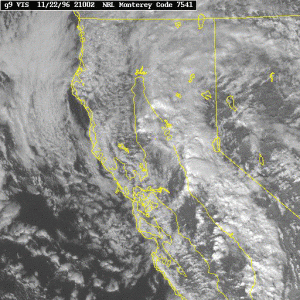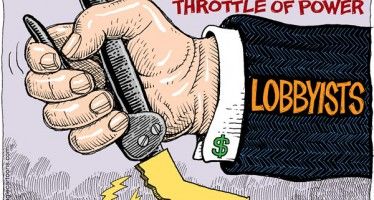Ag Water Use Estimated Too High
By WAYNE LUSVARDI
Dr. Jay R. Lund, Director of Watershed Sciences at U.C. Davis, posted the comment below at Calwatchdog.com on April 6 in response to my article, “Not A Shortage of Water Mythmakers”:
You can get roughly 75 percent of human water use in agriculture being agricultural in several ways, some from DWR [Department of Water Resources] and others from reading reports by local agencies and backing out water use from pretty well-understood fundamentals (like crop net water use rates, acres of crops, populations, and urban per-capita use rates). The numbers vary a bit with your assumptions, of course, but pretty much any reasonable estimate shows agriculture being the largest human use of water in California, by a fair bit. Many such estimates are a bit squishy, which is not surprising, but they provide some insights anyway.
So for further clarification to readers, I created the contingency table below from state data that breaks down the percentage of agricultural water used for a wet year, average year and dry year as a portion of:
-
- * Total precipitation and imported water (total potential water);
- * Total dedicated supply for urban, agriculture, and environment (total available water);
- * Total urban and agricultural use only (total human water use).
Context of Discussion
The point of my April 5 article was to provide a counterpoint to the claim made by Dr. Peter Gleick, Ph.D., that there “isn’t enough water to satisfy demand” and that agriculture uses 80 percent of all water supplies.
When the public reads there isn’t enough water, I believe reasonable people would assume this to mean all water supplies from all sources — not just the amount of water available in California’s system of dams, canals, reservoirs and pipelines.
By analogy, how much water falls on all my property in a year, not just in the rain gutters that catch limited water runoff only from the roof?
What I think the public wants to know is how much total water is potentially available even if it is not “developed” or “captured.” When you’re making the Chicken Little claim that “we’re running out of water,” then the assumption is you’re talking about total potential water. Otherwise you’re misleading the public that there is no more water available after agriculture uses 75 percent and cities use 25 percent. But that isn’t the case in the real world. There is much more water potentially available after agricultural use, especially in a wet year.
Agricultural Water Use Defined Narrowly — 8 percent to 19 percent
Using the above-defined terms as a basis of narrow comparison, agriculture uses 8 percent in a wet year, 14 percent in an average year, and 19 percent in a dry year, according to commonly used data from the California Department of Water Resources.
Agricultural Water Use Defined Broadly — 78 percent to 80 percent
But if you want to define the total amount of water broadly to be only the amount of “developed” water for urban and agricultural uses, then the percentages for agricultural use would be 78 percent in a wet year, 79 percent in an average year, and 80 percent in a dry year.
To arrive at a high percentage of agricultural water use of from 78 percent to 80 percent, you have to exclude that the environment gets 35 percent to 64 percent of all the dedicated water. This might be construed as lying with statistics to puff up the number.
Agricultural Water Use Defined by the State
Agricultural use of all “developed” or “available” water supplies in California’s water system runs from 28 percent in a wet year, 41 percent in an average year and 52 percent in a dry year. This is the range of percentages used by the California Department of Water Resources as reflecting the amount of water used by agriculture as a percentage of their closed water system, not the entire amount of water that falls in the state.
The DWR indicates that this number is projected to drop to 39 percent by 2020.
Measuring Assumptions, Not Numbers
What is revealed by this breakdown is that assumptions control the numerical outcome. Pick a number. Any number will do, depending on your assumptions.
It is unethical for public officials and experts to use numbers without disclosing their assumptions. But in water politics, water numbers are apparently what you can get away with. And Dr. Gleick has apparently gotten away with not disclosing a “whopper” set of unrealistic assumptions for too long.
Who cares if agriculture uses 75 percent of a bucket of water, when there is a bathtub of water available — as well as a swimming pool of total water that could be potentially tapped?
If you are an environmentalist, you will use the number that says agriculture uses 80 percent of water supplies based on an assumption that every year is a dry year and that water that falls on the environment cannot be included in your conclusion. Those are pretty misleading assumptions in the opinion of this writer.
Water is a mirror pool that reflects what ever number you may want it to. But the definition of reality is something I can’t wish away. And it is difficult to wish away that in a dry year 145 million acre feet of water fall on California, and in a wet year 335 million acre feet of water. The percentage of agricultural water used is estimated unrealistically high.
PICK A NUMBER – PERCENT AGRICULTURAL USE OF WATER
| Identity | WET YEAR
1998 |
AVERAGE YEAR
2000 |
DRY YEAR
2001 |
| TOTAL POTENTIAL WATER
Precipitation and Imports (raw water – developed and undeveloped) |
|||
| Total in Millions of Acre Feet | 335.8 | 194.2 | 145.5 |
| Agriculture MAF | 27.7 | 27.7 | 27.7 |
| Percent Ag | 8.2% | 14.3% | 19% |
| TOTAL AVAILABLE WATER Total Developed Water Urban, Agriculture & Environment (raw water – developed only) |
|||
| Total in Millions of Acre Feet | 97.5 | 82.5 | 65.1 |
| Agriculture MAF | 27.7 | 34.3 | 34.1 |
| Percent Ag | 28.4% | 41.6 | 52.4% |
| TOTAL WATER FOR HUMAN USE
Urban and Agricultural Use (raw & treated water) (“Human Use” = Treated Water Only) |
|||
| Total in Millions of Acre Feet | 35.4 | 43.1 | 42.7 |
| Agriculture MAF | 27.7 | 34.1 | 34.1 |
| Percent Ag | 78.2% | 79.1 | 79.9% |
| Primary data source: http://www.water.ca.gov/swp/watersupply.cfm | |||
California Water Balance Summary
For Water Years 1998, 2000 and 2001
| Where the Water Goes | 1998 (Wet Year) | 2000 (Avg Year) | 2001 (Dry Year) |
| Total Supply
(Precipitation & Imports) |
335.8 million acre-feet | 194.2 million acre-feet | 145.5 million acre-feet |
| Dedicated Supply (Includes Reuse) | 97.5 million acre-feet | 82.5 million acre-feet | 65.1 million acre-feet |
Distribution of Dedicated Supply to Various Applied Water Uses
| Where the Water Goes | 1998 (Wet Year) | 2000 (Avg Year) | 2001 (Dry Year) |
| Urban Uses | 7.7 million acre-feet (8%) | 8.8 million acre-feet (11%) | 8.6 million acre-feet (13%) |
| Agricultural Uses | 27.7 million acre-feet (28%) | 34.3 million acre-feet (42%) | 34.1 million acre-feet (52%) |
| Environmental Water | 62.1 million acre-feet (64%) | 39.4 million acre-feet (47%) | 22.4 million acre-feet (35%) |
.
.
Related Articles
School Funding Reform Skewered by CTA
JULY 11, 2011 By WAYNE LUSVARDI In California, all good ideas for school reform seem to end up in the corner
Referendum advances to repeal bathroom bill
Organized and run by Privacy for All Students, a potential referendum, if approved by California voters, would repeal AB 1266, commonly
CA lobbyists celebrate banner year
It’s got a bad reputation, even in some parts of Washington, D.C. But lobbying is a way of life in





